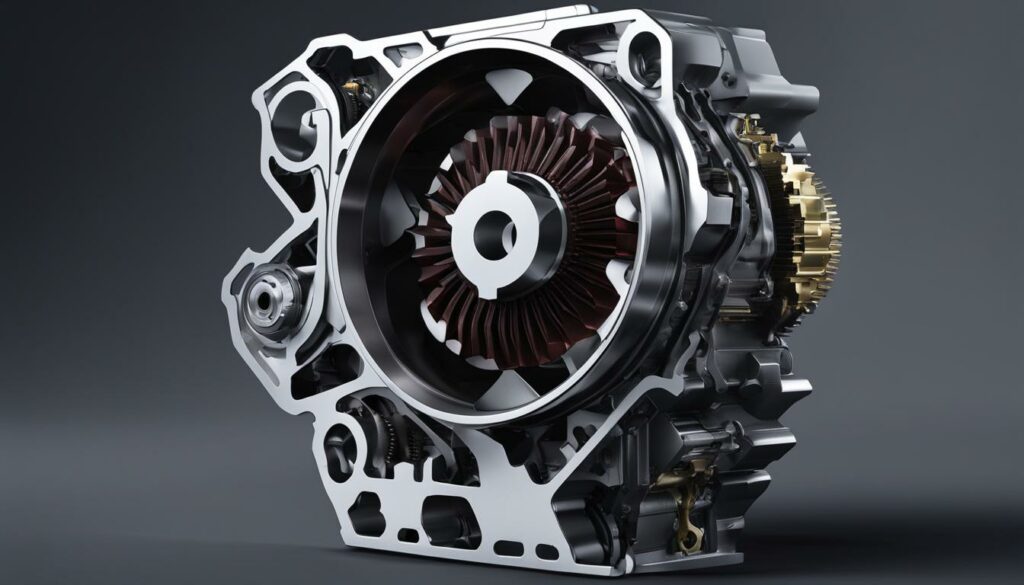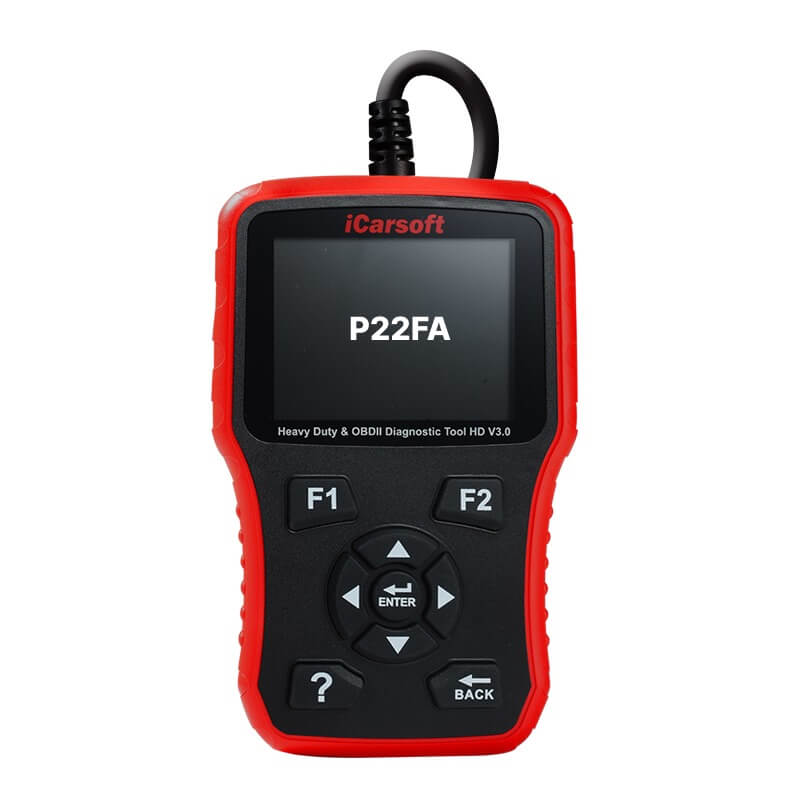P22FA – Particulate Trap Signal Plausibility Failure: Troubleshooting and Repair Guide
POSTED IN pcodes
Welcome to our comprehensive guide on P22FA – Particulate Trap Signal plausibility failure, a common issue seen in diesel vehicles. If you’ve encountered this diagnostic trouble code (DTC), don’t worry – we’re here to help you understand the causes, symptoms, and solutions to resolve this problem. Whether you’re dealing with a diesel particulate filter (DPF) failure, APS sensor malfunction, or emission control system issue, we’ve got you covered.
Before we dive into troubleshooting and repair steps, let’s briefly discuss what the P22FA code signifies. It specifically points to a Particulate Trap Signal plausibility failure in the DPF. The DPF plays a crucial role in trapping and removing harmful particulate matter from the exhaust gases, ensuring cleaner emissions. When the P22FA code is triggered, it’s essential to act promptly to prevent further damage to the engine and emission control system.
To help you better understand P22FA, we’ll explore the diesel particulate filter’s function, symptoms that indicate a plausibility failure, common causes, and troubleshooting steps. Additionally, we’ll discuss both repair and maintenance procedures, as well as an alternative solution for the permanent removal of the P22FA code.
Key Takeaways:
- P22FA signifies a Particulate Trap Signal plausibility failure in diesel vehicles.
- The diesel particulate filter (DPF) is responsible for trapping and removing harmful particulate matter from exhaust gases.
- Symptoms of P22FA include reduced engine performance, increased fuel consumption, and the illuminated check engine light.
- Common causes of P22FA include APS sensor malfunction, exhaust system issues, and general failures in the emission control system.
- Troubleshooting steps involve inspecting the DPF, testing the APS sensor, and conducting system checks.
- Repair and maintenance may include DPF cleaning, sensor replacement, or repairs to the exhaust or emission system.
- As an alternative solution, the permanent removal of the P22FA code can be done through ECU file upload.
Understanding the Diesel Particulate Filter
The diesel particulate filter (DPF) plays a crucial role in the exhaust system of diesel vehicles. Its primary function is to capture and store soot particles present in the exhaust gases, preventing them from being released into the environment. By trapping these harmful particles, the DPF contributes to reducing air pollution and maintaining cleaner air quality.
Over time, the DPF can become clogged with the accumulated soot particles, resulting in decreased engine performance and potential damage. This is where DPF maintenance becomes essential to ensure optimal filter functionality and prevent costly repairs.
Buy tested tuning file for Adblue / EGR / DPF / Adblue off now!
One crucial aspect of DPF operation is regeneration. During normal driving conditions, the filter goes through a process called DPF regeneration, which involves burning off the trapped soot particles and converting them into ash. This regeneration process occurs automatically in most modern diesel vehicles, triggered by the engine’s control unit when the DPF reaches a certain level of soot accumulation.
To conduct DPF regeneration, the engine control unit raises the exhaust gas temperature, aiding in the combustion of trapped soot particles. This process typically occurs during longer drives at higher speeds, allowing the exhaust system to reach the necessary temperature for efficient DPF regeneration.
In order to maintain the DPF’s effectiveness, regular maintenance is crucial. Proper DPF maintenance includes periodic inspections, cleaning, and regeneration to prevent excessive soot buildup. Additionally, using high-quality diesel fuel and adhering to recommended maintenance intervals will help ensure optimal DPF functionality and prevent unnecessary issues.
DPF Maintenance Checklist:
- Inspect the DPF for any signs of physical damage, leaks, or blockages.
- Monitor the DPF’s soot level through the vehicle’s onboard diagnostic system.
- Clean the DPF periodically to remove accumulated soot particles.
- Ensure proper engine oil levels and use oil compatible with DPF-equipped vehicles.
- Follow the manufacturer’s recommendations for DPF regeneration procedures.
- Adhere to recommended maintenance intervals and use high-quality diesel fuel.
By following these DPF maintenance practices, diesel vehicle owners can ensure the longevity and optimal performance of their DPF, ultimately contributing to cleaner air and a healthier environment.
Symptoms of P22FA – Particulate Trap Signal Plausibility Failure
When the P22FA code is triggered, it is important to pay attention to the symptoms that may indicate a Particulate Trap Signal Plausibility Failure. These symptoms are crucial indicators of potential issues with the diesel particulate filter (DPF) and the overall emission system of your vehicle. Recognizing these symptoms early on can help you take immediate action and prevent further damage to your engine and emission control system.
- Engine performance issues: One of the most common symptoms of P22FA is reduced power or acceleration. You may notice that your vehicle struggles to reach its usual speed or experiences a delay in responding to throttle input. This can be a result of the compromised efficiency of the diesel particulate filter.
- Increased fuel consumption: Another symptom to watch out for is an increase in fuel consumption. If you find yourself refueling more frequently than usual or notice a significant decrease in your vehicle’s fuel efficiency, it could be attributed to the diesel particulate filter’s malfunction, causing incomplete combustion.
- Check engine light: The check engine light (CEL) is an important visual indicator of a potential issue with your vehicle. When the P22FA code is triggered, the check engine light may illuminate on the dashboard, warning you of a problem with the emission control system. It is essential to address this warning immediately to prevent further complications.
In addition to the symptoms mentioned above, you may also experience a noticeable decrease in overall vehicle performance. This could include unusual vibrations, rough idling, or a general lack of responsiveness. If you observe any of these symptoms, it is strongly recommended to have your vehicle inspected by a qualified professional to diagnose and resolve the underlying issue.
“If you notice reduced power, increased fuel consumption, or the check engine light illuminates, it’s important to address the symptoms promptly to prevent further damage to your engine and emission system.”
Common Causes of P22FA – Particulate Trap Signal plausibility failure
The P22FA code can be triggered by various factors that contribute to the failure of the particulate trap signal. Understanding these common causes is essential for effectively diagnosing and resolving the issue.
APS Sensor Malfunction
An APS (Absolute Pressure Sensor) malfunction can result in incorrect signal readings from the particulate trap. This can lead to the triggering of the P22FA code. Therefore, it is crucial to inspect and test the APS sensor to ensure its proper functioning.
Exhaust System Issues
Problems within the exhaust system can have a direct impact on the functioning of the diesel particulate filter (DPF). Blockages, leaks, or damage to the exhaust system can hinder the proper operation of the DPF, resulting in a P22FA code. Thorough inspections and repairs of the exhaust system are necessary to address this potential cause.
Emission Control System Failures
General failures within the emission control system can also trigger the P22FA code. These failures may include issues with other components of the emission control system, such as the oxygen sensors or catalytic converter. Comprehensive system checks and diagnostic tests should be conducted to identify and resolve any underlying failures within the emission control system.
Identifying the specific cause of the P22FA code requires a thorough diagnostic process. Professional assistance or consulting manufacturer-approved diagnostic procedures is recommended to accurately diagnose and address the root cause of the issue.
Troubleshooting Steps for P22FA – Particulate Trap Signal plausibility failure
Troubleshooting the P22FA code requires a systematic diagnostic process. By following these steps, you can effectively identify and resolve the issues causing the Particulate Trap Signal plausibility failure in diesel vehicles.
1. DPF Inspection
The first step in troubleshooting the P22FA code is to inspect the diesel particulate filter (DPF) for any physical damage or blockages. This can be done by visually examining the DPF for signs of cracks, leaks, or excess soot accumulation. A clogged or damaged DPF can lead to improper functioning and trigger the P22FA code.
2. Sensor Testing
Next, you should test the APS sensor to ensure it is functioning correctly. The APS sensor measures the pressure difference across the DPF and provides crucial data for the particulate trap signal. Use a diagnostic scan tool to check the sensor’s readings and compare them to the manufacturer’s specifications. If the sensor is faulty or providing inaccurate readings, it can cause the P22FA code to be triggered.
3. System Checks
Conducting system checks is essential to identify any other potential issues within the emission control system. This can involve examining the exhaust system for leaks or damage, inspecting the wiring harnesses and connectors for any signs of wear or corrosion, and verifying the proper functioning of other sensors and components related to the emission system.
Following these troubleshooting steps will help you pinpoint the exact cause of the P22FA code and determine the necessary actions for resolving the issue.
If you are unsure or unfamiliar with the diagnostic process, it is recommended to consult a professional mechanic or follow a manufacturer-approved troubleshooting procedure to accurately address the P22FA code.
| Troubleshooting Steps for P22FA | Description |
|---|---|
| DPF Inspection | Visually inspect the DPF for physical damage or blockages. |
| Sensor Testing | Test the APS sensor to ensure it is functioning correctly. |
| System Checks | Conduct thorough checks of the emission control system for any other potential issues. |

Repair and Maintenance for P22FA – Particulate Trap Signal Plausibility Failure
Once the specific cause of the P22FA code has been identified through the troubleshooting process, appropriate repair and maintenance procedures can be undertaken. Depending on the severity of the issue, different actions may be required to resolve the problem effectively.
Maintenance Tasks for P22FA Resolution
In some cases, performing routine maintenance tasks can rectify the P22FA code. These tasks include:
- DPF Cleaning or Regeneration: Cleaning or regenerating the diesel particulate filter (DPF) can eliminate any accumulated particles and restore its proper functionality. This process removes the trapped soot particles and allows the DPF to operate efficiently again.
- System Checks: Conducting thorough system checks can help identify any additional issues within the emission control system. By inspecting various components such as sensors, valves, and pipes, potential problems can be detected and addressed.
Replacement and Repair for P22FA Resolution
In more severe cases, replacement or repair of certain components may be necessary. The following actions can help resolve the P22FA code:
- Sensor Replacement: If a malfunctioning APS sensor is the root cause of the P22FA code, replacing the sensor can rectify the issue. A new sensor will provide accurate readings and ensure proper functioning of the particulate trap signal.
- Exhaust System Repair: Addressing any exhaust system issues, such as leaks or damage, can contribute to the resolution of the P22FA code. Repairing these issues will restore the proper operation of the diesel particulate filter and the overall emission control system.
- Emission System Repair: General failures in the emission control system can trigger the P22FA code. By identifying and fixing any malfunctions or failures within the system, the code can be effectively resolved.
It is crucial to follow manufacturer guidelines when performing repair and maintenance procedures related to the P22FA code. Consulting a professional automotive technician or specialized repair center will ensure the correct diagnosis and appropriate resolution of the issue.
Alternative Solution – Permanent Removal of P22FA Code
In certain situations where professional assistance is unavailable or the cost of repair is prohibitive, there is an alternative solution for permanently removing the P22FA code. By uploading the Engine Control Unit (ECU) file to a specialized portal, you can effectively eliminate the P22FA code from the system, disabling the particulate trap signal plausibility failure.
This option should only be considered as a last resort, after thorough diagnosis and repair attempts have been made. It is crucial to exhaust all possible avenues for resolving the issue before opting for the permanent removal solution.
How does it work?
By uploading the ECU file to a specialized portal, the programming within the file can be modified to remove the P22FA code from the system. This reconfiguration effectively eliminates the particulate trap signal plausibility failure, preventing future triggers of the P22FA code.
It is important to note that the ECU file upload should be performed by a professional or someone with the necessary expertise. Incorrect modifications to the ECU file can result in adverse effects on the vehicle’s performance and may even void warranties.
Pros and Cons of Permanent Removal
Before opting for the permanent removal option, it is essential to consider the pros and cons associated with this solution.
| Pros | Cons |
|---|---|
|
|
Considering these factors, it is crucial to weigh the benefits against the potential drawbacks and make an informed decision.
Remember, the permanent removal option should only be considered as a last resort when all other avenues have been explored and professional assistance is not available or cost-prohibitive.

Conclusion
The P22FA code, indicating a Particulate Trap Signal plausibility failure, is a common issue in diesel vehicles. Understanding the function and maintenance requirements of the diesel particulate filter (DPF) is crucial in preventing this code from occurring. Regular maintenance and monitoring of the emission system can help prevent future P22FA codes and ensure optimal vehicle performance.
However, if the P22FA code is triggered, proper troubleshooting and diagnosis are essential to identify the specific cause. Repair and maintenance tasks, such as DPF cleaning or replacement, sensor testing or replacement, and exhaust or emission system repairs, may be necessary to resolve the issue.
If professional assistance is not available or cost-prohibitive, there is an alternative option of permanently removing the P22FA code through ECU file upload. This should be considered as a last resort after thorough diagnosis and repair attempts have been made.
By staying proactive with regular emission system maintenance and following troubleshooting tips, such as timely DPF cleaning and conducting diagnostic checks, diesel vehicle owners can minimize the occurrence of the P22FA code and ensure a smoother driving experience.
FAQ
What is P22FA – Particulate Trap Signal plausibility failure?
P22FA is a diagnostic trouble code that indicates a malfunction in the diesel particulate filter (DPF) and its signal. It signifies a plausibility failure, which means there is an issue with the DPF’s operation or the signals it is providing.
What is the function of the diesel particulate filter (DPF)?
The DPF is responsible for trapping and storing soot particles from the exhaust gases of diesel vehicles. It prevents these harmful particles from being released into the environment, promoting cleaner emissions.
What are the symptoms of P22FA – Particulate Trap Signal plausibility failure?
Symptoms may include reduced engine performance, such as decreased power and acceleration, increased fuel consumption, and the illumination of the check engine light on the dashboard.
What are the common causes of P22FA – Particulate Trap Signal plausibility failure?
Common causes include APS sensor malfunction, exhaust system issues, and general failures within the emission control system.
What are the troubleshooting steps for P22FA – Particulate Trap Signal plausibility failure?
Troubleshooting involves inspecting the DPF for physical damage or blockages, testing the APS sensor, and conducting system checks to identify other potential issues within the emission control system.
How can I repair and maintain P22FA – Particulate Trap Signal plausibility failure?
Repair and maintenance tasks may include DPF cleaning or regeneration, sensor replacement, and repairs to the exhaust or emission system. Consult a professional and follow manufacturer guidelines for accurate repairs.
Is there an alternative solution to permanently remove the P22FA code?
Yes, there is an option to permanently remove the P22FA code by uploading the Engine Control Unit (ECU) file to a specialized portal. However, this solution should only be considered as a last resort after thorough diagnosis and repair attempts.
What is the conclusion regarding P22FA – Particulate Trap Signal plausibility failure?
Understanding the function and maintenance requirements of the diesel particulate filter is crucial in preventing P22FA codes. Prompt diagnosis, repair, and maintenance can prevent further damage to the engine and emission system, ensuring optimal vehicle performance.


